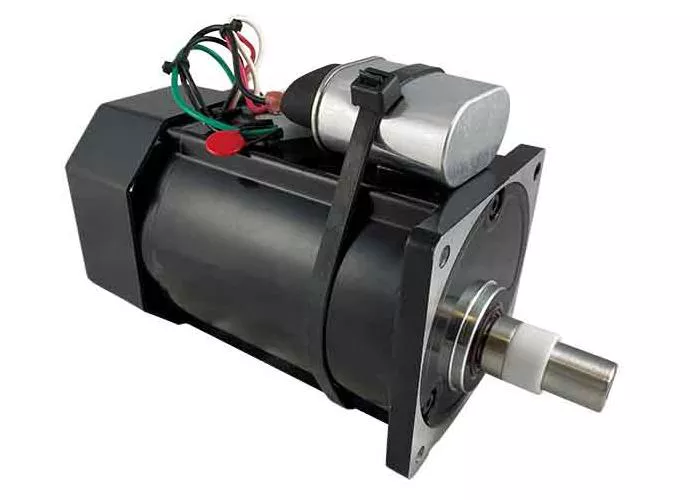The capacitor-start induction motor is one of the most widely used types of single-phase induction motors in the industrial and domestic sectors. Its design is renowned for high starting torque and moderate efficiency, making it a preferred choice for various applications where a strong initial torque is critical. This article provides an in-depth look into the structure, operation, characteristics, and applications of the capacitor-start induction motor while comparing it to other forms of induction motors.
Understanding the Basic Construction
The capacitor-start induction motor is a single-phase AC motor that employs a starting capacitor in series with a starting winding. Its main components include:
- Stator: Houses the main and auxiliary (starting) windings. These windings are spatially displaced by 90 degrees to create a rotating magnetic field.
- Rotor: Typically a squirrel cage type, similar to that found in the squirrel cage induction motor.
- Capacitor: Connected in series with the starting winding to provide a phase shift that helps in generating a high starting torque.
- Centrifugal Switch: Disengages the starting winding and capacitor once the motor reaches about 70-80% of its synchronous speed.
How Capacitor-Start Induction Motor Work
The capacitor-start motor operates on the principle of phase splitting. When AC power is applied, the capacitor causes the current in the auxiliary winding to lead the current in the main winding by a significant angle. This phase difference produces a rotating magnetic field which causes the rotor to start turning.
Once the motor attains a substantial percentage of its synchronous speed, the centrifugal switch opens, disconnecting the auxiliary winding and capacitor from the circuit. The motor continues to run solely on the main winding.
Phase Splitting and the Role of the Capacitor
In single-phase induction motors, the absence of a naturally rotating magnetic field at startup poses a challenge. The capacitor compensates for this by creating a time-phase difference between the current in the main and starting windings. This results in a rotating magnetic field capable of initiating motor rotation.
The value of the capacitor is carefully chosen to ensure optimal phase difference and starting torque. Typically, an electrolytic capacitor with high capacitance (e.g., 100 μF or more) is used.
Why Centrifugal Switch is Essential
The centrifugal switch is a mechanical device that disengages the start capacitor and auxiliary winding once the motor has picked up sufficient speed. Keeping the capacitor and auxiliary winding active throughout the operation would lead to inefficiencies and possible overheating.
Failure of the centrifugal switch can lead to performance issues, including low running efficiency, noise, or even motor damage.
Performance Characteristics
- High Starting Torque: This motor can produce torque levels 2.5 to 4 times its full-load torque, making it suitable for high inertia loads like air compressors and pumps.
- Low Running Efficiency: Despite excellent starting performance, the efficiency during regular operation is lower compared to three-phase motors.
- Moderate Speed Regulation: The motor speed is relatively stable but may vary slightly with load.
Comparison with Other Induction Motors
Compared to a wound rotor induction motor, the capacitor-start motor is simpler and less costly but cannot handle variable speed operations efficiently. Unlike a single-phase induction motor without a capacitor, the capacitor-start version offers higher torque and better starting characteristics.
Applications of Capacitor-Start Induction Motor
These motors are employed where high starting torque is essential. Common applications include:
- Refrigerators and air conditioning compressors
- Workshop machinery such as lathes and drill presses
- Conveyor belts and small hoists
- Pumps, especially in deep-well or booster systems
Design Variations
Some variants of the capacitor-start induction motor include:
- Capacitor Start-Capacitor Run Motor: Includes two capacitors—one for starting and another for running, enhancing both start-up torque and operational efficiency.
- Split Phase Motor: Lacks a capacitor and therefore has lower starting torque compared to the capacitor-start type.
Advantages and Limitations
Advantages:
- Excellent starting torque
- Simple design and maintenance
- Reliable and widely available
Limitations:
- Lower efficiency and power factor during operation
- Limited to applications not requiring frequent speed control
- Heavier and larger compared to other single-phase motors for the same output
Electrical and Mechanical Specifications
Capacitor-start induction motors are typically designed for power ratings from 1/6 HP to 10 HP. They operate on single-phase AC supply (120V or 240V, depending on region) and have a speed range of 850–1750 RPM, depending on the number of poles.
Maintenance Considerations
To ensure longevity and reliable performance, routine checks and maintenance should be conducted. Important aspects include:
- Inspecting the centrifugal switch for wear or malfunction
- Checking the capacitor for leakage or bulging
- Ensuring bearings are lubricated and not worn
- Verifying insulation resistance and continuity of windings
Energy Efficiency and Alternatives
Although not the most energy-efficient motor type, capacitor-start induction motors remain popular due to their simplicity. In applications where energy efficiency is crucial, alternatives such as synchronous motors or three-phase motors may be more appropriate.
Emerging Trends and Innovations
Modern innovations are aimed at improving the performance and efficiency of capacitor-start induction motors. These include:
- Use of smart capacitors that adapt based on load
- Integration with variable frequency drives (VFDs) to regulate speed
- Advanced thermal management materials and designs
Environmental and Regulatory Compliance
As global efficiency standards become stricter, manufacturers are focusing on designing capacitor-start motors that comply with energy labeling and environmental directives. Proper recycling of components, especially capacitors containing electrolytes, is also emphasized.
Conclusion
The capacitor-start induction motor continues to be a staple in numerous mechanical and electrical applications due to its robust starting torque and straightforward operation. While not the most efficient motor design, its balance between cost and performance makes it ideal for many scenarios. Understanding its construction, functionality, and appropriate applications allows engineers to optimize their use and select alternatives where necessary.

